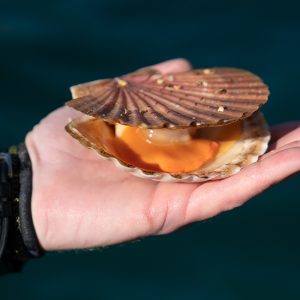LegaSea has been launched to achieve the vision of ‘more fish in the water for future generations’. It’s a bold plan that supports the people campaigning for less wasteful fishing practices, protection of sensitive marine habitats and to ensure fish conserved today are available for tomorrow’s generation of fishers. All it takes is a simple contribution from you, your family, friends and even the business you work for.
If you can imagine the ultimate fishing experience, then there is no reason why our kids and theirs would not want the same. If enough Kiwis support LegaSea now we can all leave a legacy of abundance for the future.

A myriad of threats
What we once thought as public property or fundamental to our Kiwi lifestyle have now become commercial “opportunities”. Fisheries are no exception. As costs rise so does the demand for more profits and exports. However, some of our most important inshore fisheries are at full capacity or over-exploited. This means less fish available inshore where most of us go to catch a feed, or enjoy a family day out. We need to rebuild our fisheries so they are sufficiently abundant to enable us to provide for our social, economic and cultural well-being – a guiding purpose of the Fisheries Act.
Kahawai Legal Challenge
In 2004 we were at a crossroad. Kahawai was being divvied up between interest groups after its introduction into the Quota Management System. Little consideration was being given to the years of plundering by industrial harvesting methods, mostly purse seiners guided by spotter planes. The public was expected to take what they were given– a depleted inshore fishery, less ecosystem functionality and few seabirds- and watch as kahawai was being exported for low value craybait and fishmeal products.
This was unacceptable.
The New Zealand Sport Fishing Council spearheaded a challenge against the fisheries Minister’s management decisions. Debate raged through the Courts for four years. In 2009 the Supreme Court dismissed the Council’s appeal, but also clarified many aspects of the Minister’s decision- making duties. Notably, that he has the discretion to manage a fishery and give preference to either commercial or recreational interests. While doing so, he must be reasonable when making an allowance for our interests. Undoubtedly our interests lie in having access to abundant fisheries and a healthy marine environment.
In 2010 there was a breakthrough-the Minister agreed to manage northern kahawai at a higher abundance level so numbers could increase and they would be easier to catch.
Since 2004 there has been a noticeable increase in kahawai numbers and size in many coastal areas.
Advent of LegaSea
During and after the Kahawai Challenge the NZ Sport Fishing Council was well supported by option4 and Maori interests, namely Ngapuhi and Ngati Whatua through the Hokianga Accord. After 15 overnight Accord hui, listening, talking and sharing information with environmental interests we all came to realise our close links. We do not agree on all aspects however, that does not stop us working on common concerns.
It is in everyone’s collective interests to have abundance inshore, for those seeking to feed their whanau, for recreation and to satisfy public expectation for thriving coastal waters. Over time it was obvious that option4 and the NZ Sport Fishing Council were advocating for the same outcomes. In September 2011 the people at the heart of option4 announced their intention to fully commit their support to the NZ Sport Fishing Council.
LegaSea was officially launched in February this year. It is not a new entity; LegaSea is the NZ Sport Fishing Council’s channel to raise funds to protect our collective fishing interests. All money raised through LegaSea is managed by the Council and dedicated to four work streams, namely:
- ADVOCACY
- RESEARCH
- EDUCATION
- working TOGETHER
These aspects have been identified as the best way to achieve the LegaSea vision and comply with legislation that demands fisheries are sustained for future use.





